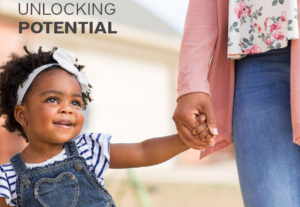Posted on June 25, 2020
On June 24, President Donald Trump issued an executive order in order to strengthen the federal child welfare system. This order, effective immediately, seeks to reduce the need for foster care and the time spent in it, while facilitating achievement of permanency through reunification, adoption or guardianship.
Currently, there are over 400,000 children in foster care nationwide, and many of those children have been waiting to be adopted. Additionally, 20,000 children age out of foster care every year without finding a permanent home. Per the executive order, the Department of Health and Human Services (HHS) will be responsible for “improving partnerships, improving resources and improving oversight.”
To help ensure that children in foster care, HHS has been directed to:
- collect data on the demographics of children in foster care and foster families, foster parent retention and certification time, the number of foster homes needed to serve children, and the time it takes across the states to complete certification for foster care and adoption.
- provide guidelines on state agency partnerships with local public, private, faith-based, and community organizations. In addition to publishing data that can be used to aid services, HHS will hold states accountable, “to the extent consistent with applicable law,” for using organizations to help recruit and support foster parents.
- The Child Welfare League of America (CWLA) predicts these partnerships will be useful for nonprofits struggling to stay afloat amid the pandemic and recession.
- develop a plan to ensure kinship guardians and youth aging out of foster care can access the services available to them. This includes the urging of states to use federal funding for kinship guardianship agreements.
- issue guidance on the flexible use of Title IV-E entitlements for quality legal representation of parents and children, as well as legal support staff.
- use “all existing technical assistance” to promote the National Training and Development Curriculum. Additionally, it must increase availability of trauma-informed training by making it free and web-based.
- require that IV-E reviews and Child and Family Services reviews adequately address things like reasonable efforts in preventing removal and establishing permanency and timeliness of Termination of Parental Rights filing.
- collect the standards used across the states for risk assessments and, within 18 months, issue best practice standards.
- conduct a study on the implementation of the 1994 Multiethnic Placement Act (MEPA), which bars discrimination on the basis of race, color, or national origin in placement. HHS must then issue guidance on implementation and the rights of parents, prospective parents, and children with disabilities.
By following these steps, the federal government hopes to help our most vulnerable children succeed.
Helpful Resources:
The Executive Order: “Strengthening the Child Welfare System for America’s Children”
Statement from the Children’s Bureau
Child Welfare League of America statement on the Executive Order
The Chronicle of Social Change, “What’s Actually in the Trump Executive Order on Child Welfare”

 In order to give all children a strong and equitable start in life, New Jersey must begin with an intentional focus on eliminating racial inequities and disparities in access to essential supports, according to a new report,
In order to give all children a strong and equitable start in life, New Jersey must begin with an intentional focus on eliminating racial inequities and disparities in access to essential supports, according to a new report, 



